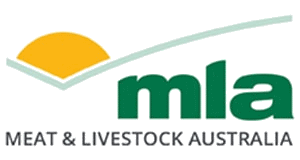B.FLT.5013 - Assessment of the Australian Feedlot Enteric Methane Inventory equation
Did you know that a new equation to predict enteric methane emissions from grainfed cattle has been developed?
| Project start date: | 01 November 2021 |
| Project end date: | 20 December 2024 |
| Publication date: | 30 October 2024 |
| Project status: | Completed |
| Livestock species: | Grain-fed Cattle |
| Relevant regions: | National |
|
Download Report
(1.3 MB)
|
|
Summary
The aim of this study was to evaluate equations in the literature for predicting methane (CH4) emissions of beef cattle when fed tempered barley-based diets typical of the Australian feedlot industry. A large database of methane measurements performed in respiratory calorimeters taken from beef cattle fed a range of barley-based feedlot diets was assembled and analysed. This database with 384 individual measurements of 53 animals from four studies included a wide range of factors that are known to impact methane production such as dry matter intake, ether extract, crude protein and cell wall components, amongst others.
Objectives
1) Undertake a large respiration chamber calorimeter experiment to measure the enteric methane emissions of Australian feedlot cattle fed tempered barley diets containing different levels of dietary fat and roughage (NDF).
2) Assemble a database of methane emissions from Australian feedlot cattle including the results from the study specified in Objective (1), as well as other data sets of control methane emissions from previous MLA funded respiration calorimeter experiments.
3) Evaluate equations in the literature for predicting CH4 emissions of beef cattle when fed tempered barley-based diets typical of the Australian feedlot industry. The results of this evaluation will inform the most appropriate methodologies for accurately predicting the methane emissions of the Australian feedlot cattle industry sector, at a country and international reporting level.
4) Develop new and more accurate ways to predict enteric methane from Australian lot fed cattle.
5) Provide these results to the Department of Climate Change, Energy, the Environment and Water.
Key findings
The Moe and Tyrrell (1979) equation currently utilised by the Australian National Inventory report had poor accuracy with mean bias overprediction of 115g CH4/d, such that the predicted CH4 production (mean of 194.9g CH4/d) was 2.44 × observed CH4 production (mean of 79.9g CH4/d), along with significant linear bias (P < 0.01), and poor precision (r2 = 0.05). Methane was overpredicted by 55.0 and 163g/d at minimum, and maximum predicted values, respectively. All other evaluated equations lacked accuracy and precision in predicting methane emissions of feedlot cattle. Two new equations for predicting enteric methane emissions from feedlot cattle were developed.
Benefits to industry
This study contributes to developing accurate estimations of enteric methane emissions for the Australian beef feedlot sector. If accepted into the national inventory, the new method should result in the baseline feedlot emissions from the Australian feedlot cattle being reduced by 30%.
MLA action
A dossier will be developed using a peer-reviewed publication from this project, and results from previous MLA projects demonstrating observed methane emissions are lower than predicted by the current methodology. This will be submitted to the Australian Government to support a change in Australia’s tier 2 IPCC National Inventory reporting methodology for enteric methane emissions emanating from Australian feedlot cattle to a more accurate equation.
Future research
Future research may focus on different diet and cattle market categories of grainfed cattle.
More information
| Project manager: | Matt Van der Saag |
| Contact email: | reports@mla.com.au |
| Primary researcher: | UNIVERSITY OF NEW ENGLAND |


